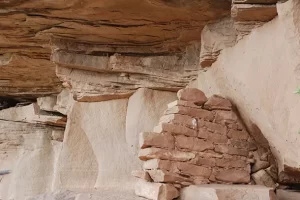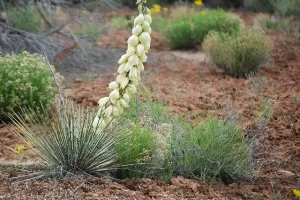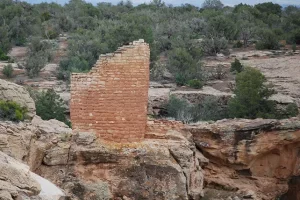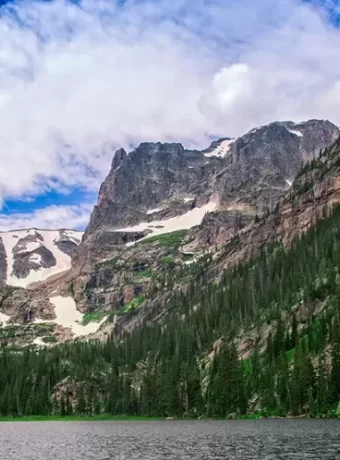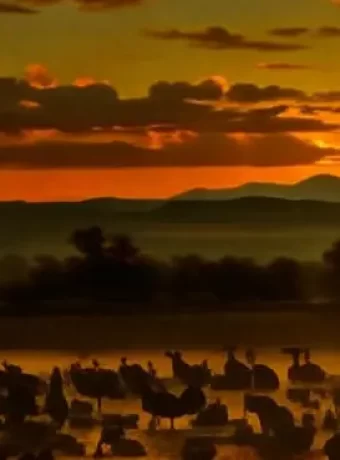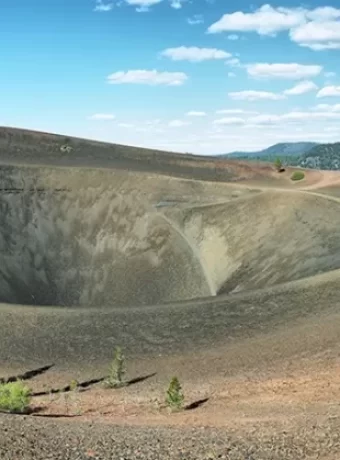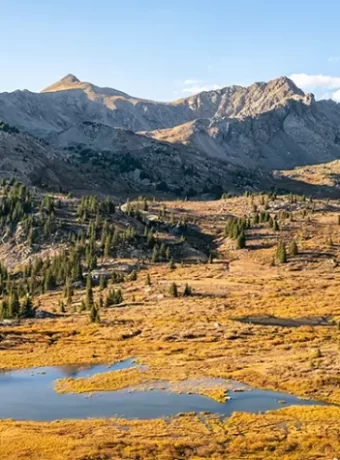Ancient Echoes: Exploring the History of Canyon of the Ancients and Hovenweep
The Four Corners region of the southwestern United States is a land rich in history, especially when it comes to the Ancestral Puebloan people. Their legacy lives on in amazing places like Mesa Verde National Park. But the history of Canyon of the Ancients and Hovenweep National Monuments show us so much about this fascinating culture. You might think, “Why visit these lesser-known places when Mesa Verde is right there?” Well, get ready because I’m about to show you just how captivating these spots are and how they add depth to any exploration of Ancestral Puebloan life.
Upon visiting Hovenweep and Canyon of the Ancients is was taking a step back in time. These two national monuments, with their captivating cliff dwellings, towers, and kivas, are amazing reminders of a civilization that thrived centuries ago. I love exploring the nooks and crannies of these ruins because the craftsmanship always blows me away. Spending the night here under the stars was magical. Sends chills up the Chakra’s. To fully appreciate the History of Canyon of the Ancients and Hovenweep, we have to look at them individually. And this will help us grasp the broader picture of Ancestral Puebloan culture.
Table of Contents
Canyon of the Ancients: A Story Told Through Scattered Stones
The sheer vastness of Canyon of the Ancients National Monument is staggering. Imagine over 176,000 acres of public lands teeming with more archaeological sites than you can imagine – thousands upon thousands of them. It’s no wonder the area has earned the distinction of having the highest known density of archaeological sites in the entire United States. This is not a park where the ancient structures are neatly fenced off or heavily reconstructed. Canyon of the Ancients provides an experience where you truly feel like you’re stumbling upon history just waiting to be uncovered.
A Different Type of National Monument
Canyon of the Ancients is different from Hovenweep National Monument in that it’s managed by the Bureau of Land Management (BLM), not the National Park Service (NPS). This fact leads to some striking contrasts that make a big difference in how you experience these places. Most of Canyon of the Ancients is less developed than your typical NPS-managed sites. While this may mean fewer interpretive signs and trails, it allows visitors to engage with the area in a much rawer, more independent way.
Imagine trekking across high desert mesas, hiking through canyons carved by time, and happening upon ancestral Puebloan ruins. You feel like you’re part of an archaeological adventure because many of the structures are unrestored, and much of the land is undisturbed. To really navigate Canyon of the Ancients you’ll want to brush up on your map-reading skills and bring your sense of adventure. That is what really sets this experience apart.

Neowise Comet over the Tetons
Graphic Hoodie Comet over the Tetons is the perfect Outdoor Apparel for exploring Canyon of the Ancients and Hovenweep.
- Anasazi Ruins
- Yucca Plant in bloom, as we wander through the ruins in Canyon of the Ancients.
- So many of the Puebloan Ruins are built in the round.
- Neon looking Paint Brush.
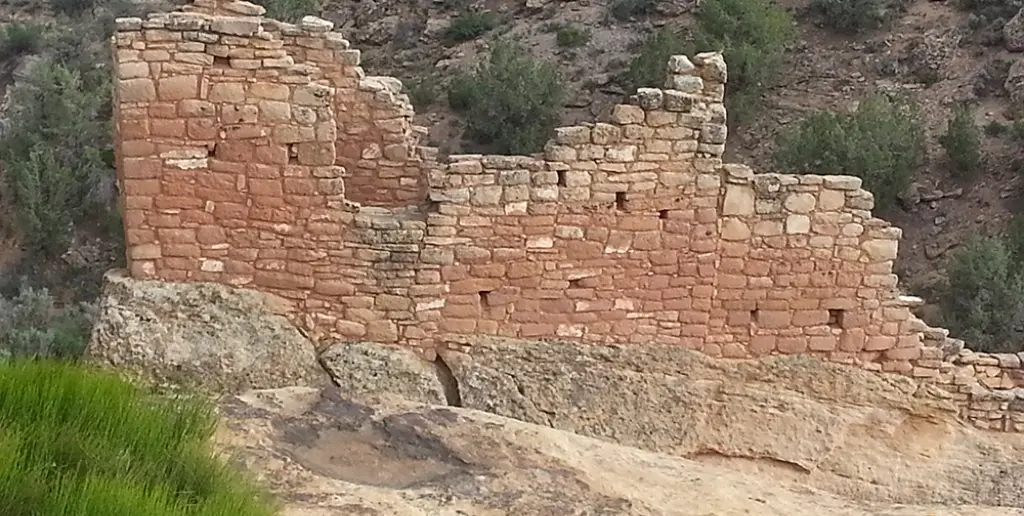
Larger Puebloan dwelling Canyon of the Ancients
Unveiling the Past: Key Sites in Canyon of the Ancients
Before starting this journey one ought visit the Anasazi Heritage Cultural Center. It’s a truly amazing experience.
Canyon of the Ancients has several key locations that really help you understand the cultural heritage of the Ancestral Puebloans. Lowry Pueblo stands as one of the most well-preserved archaeological sites, featuring around 40 rooms and a grand kiva that highlights the ceremonial aspects of Ancestral Puebloan life. You’ll get a chance to witness the remarkable masonry skills that these ancient people possessed. The way they built homes and structures is inspiring.
I vividly recall one of my visits to Painted Hand Pueblo, named after the faded handprints adorning its walls. It is one of those places where the stillness of the high desert really allows you to feel the weight of history. Although it requires navigating a rugged dirt road to reach this site, the chance to stand amongst those ancient ruins is well worth it.
Then you have Sand Canyon. With its hiking trails winding through a scenic canyon carved by Sand Creek, this area offers an opportunity to get a firsthand look at what it would have been like for the Ancestral Puebloans to live in this area. The namesake Sand Canyon Pueblo was a large village. They even practiced irrigation – a testament to the ingenious strategies for adapting to a sometimes unforgiving environment.
Hovenweep National Monument: Towers that Touch the Sky
From vast and wild landscapes, let’s shift our focus to the remarkable Hovenweep National Monument. This place is a haven of unique and captivating architecture. Picture towering stone structures clinging to canyon rims and perched atop mesas, showcasing incredible ingenuity and artistry. Imagine standing at the base of a Hovenweep tower, and gaze upwards at its sandstone blocks carefully fitted together centuries ago. It is absolutely a remarkable testament to the sophisticated building techniques of the people who called this place home. You feel the power of human creativity against a timeless backdrop of dramatic canyon scenery. This is where the History of Canyon of the Ancients and Hovenweep truly becomes a multi-sensory experience.
Exploring Hovenweep’s Towers: Wonders of Ancient Architecture
One of the most accessible and impressive sites at Hovenweep is the Square Tower Group, easily reachable via a short loop trail near the campground and visitor center. The structures, with names like Hovenweep Castle and Twin Towers, truly speak to the scale and artistry involved in their creation. And it’s incredible to think about their significance. These towers likely served various purposes: astronomical observation, storage, defense, and even as markers of communal spaces.
As you delve deeper into Hovenweep, make sure to visit the Holly Group nestled within Keely Canyon. To get there, hike along the canyon floor for around three and a half miles, passing fascinating structural remains along the way. Another option is to venture along a rough dirt road and enjoy a shorter walk to reach these intriguing structures. This village is known for structures such as the Holly House and Tilted Tower. These offer intimate glimpses into daily life at Hovenweep.
A Place for Night as well as Day: Hovenweep After Dark
Hovenweep, designated an International Dark Sky Park, becomes even more special after dark. Imagine looking up into a vast, star-filled sky practically unobstructed by modern light pollution. It is absolutely humbling and you realize that this was likely the same sight the ancient residents enjoyed. It deepens your connection with the history of the area because you’re witnessing nature’s own planetarium show.
Hovenweep and Canyon of the Ancients: More than Just Stones and Stars
If we truly want to connect with the Ancestral Puebloan people we have to understand their lives. It’s essential to learn about their struggles. These communities had to adapt and thrive in an incredibly challenging environment. We see this when looking at the remains of ingenious check dams, irrigation systems, and strategically placed villages that made survival possible. The story of Hovenweep and Canyon of the Ancients is much more than simply ancient structures. It’s a tale of resourcefulness, determination, ingenuity, and how communities came together. The remnants scattered across these monuments remind us that the desert holds the secrets to their world. Their ways of life may be long gone, but it’s crucial to honor and respect the history of these places and the people who made them.
Threats and Challenges to Ancestral Puebloan History
Though hundreds of years have passed, these sites are not safe from modern-day threats. Damage from natural elements, the wear and tear of increasing visitation, and even issues like looting underscore the need for protective measures. But they show us how important stewardship is. Take the 2020 incident of a Cortez man’s sentencing for looting at Canyon of the Ancients as an example. Understanding the History of Canyon of the Ancients and Hovenweep compels us to become advocates for preserving the history of these special places for future generations.
FAQs about History of Canyon of the Ancients and Hovenweep
What is the history of Hovenweep?
Hovenweep, with its captivating towers and cliff dwellings, holds the stories of the Ancestral Puebloan people who made it their home between 500 and 1300 A.D. These folks lived in smaller communities until around 1200 AD when there was a rapid increase in construction. Hovenweep is known for its towers and is also a recognized International Dark Sky Park. You can feel the power of human creativity as you gaze upwards at these sandstone marvels, carefully fitted together against a timeless backdrop of dramatic canyon scenery. You can hike short distances to the ruins in Utah, but you’ll need a four-wheel-drive, high-clearance vehicle for many sites and for all the sites in Colorado. Hovenweep, administered by the National Park Service, charges an entrance fee per vehicle. The entrance fee is good for seven days.
How old is Canyon of the Ancients?
The history of Canyon of the Ancients stretches back more than 10,000 years, starting with the arrival of nomadic Paleoindians. These early inhabitants laid the foundation for the rich cultural tapestry that unfolded in the area. Evidence points to the Ancestral Puebloans as the primary architects of the incredible structures at both Hovenweep and Canyon of the Ancients between approximately 500 and 1300 A.D. It was June 9, 2000, that President Clinton declared it a national monument.
Is Canyon of the Ancients or Hovenweep a National Monument?
Both Canyon of the Ancients and Hovenweep are officially designated national monuments, though their managing bodies differ. Hovenweep, established in 1923, falls under the care of the National Park Service. But Canyon of the Ancients, designated in 2000, is managed by the Bureau of Land Management. This makes it quite unusual because BLM lands tend to be vast. This allows a different style of public access and conservation efforts than NPS sites which means they offer very different visitor experiences. But one similarity is they both preserve irreplaceable pieces of Ancestral Puebloan history.
Who were the people of Hovenweep?
The people who created those iconic towers and lived within Canyon of the Ancients are most accurately referred to as the Ancestral Puebloans. The term “Anasazi,” while commonly used in the past, is now understood to be outdated and insensitive because it’s derived from a Navajo word meaning “ancient enemies.” This term is often seen in old documents and articles. Remember, the most respectful way to refer to the people who built these communities is “Ancestral Puebloan.”
Conclusion of History of Canyon of the Ancients
Canyon of the Ancients and Hovenweep aren’t just amazing examples of Ancestral Puebloan life; they’re also a lesson for us all about taking care of the past. I’m happy to know they are officially recognized as National Monuments. They remind me that we are stewards of an incredible inheritance. If you ever want to experience History of Canyon of the Ancients and Hovenweep firsthand, plan a trip. The history of these ancient monuments won’t disappoint.
From Canyon of the Ancients to?
Trails, National Parks and Monuments. A Plethora of Fly Fishing destinations. It’s hard to make up ones mind. Head straight up the Rockies and jump off at Alaska, or any other great destination.

